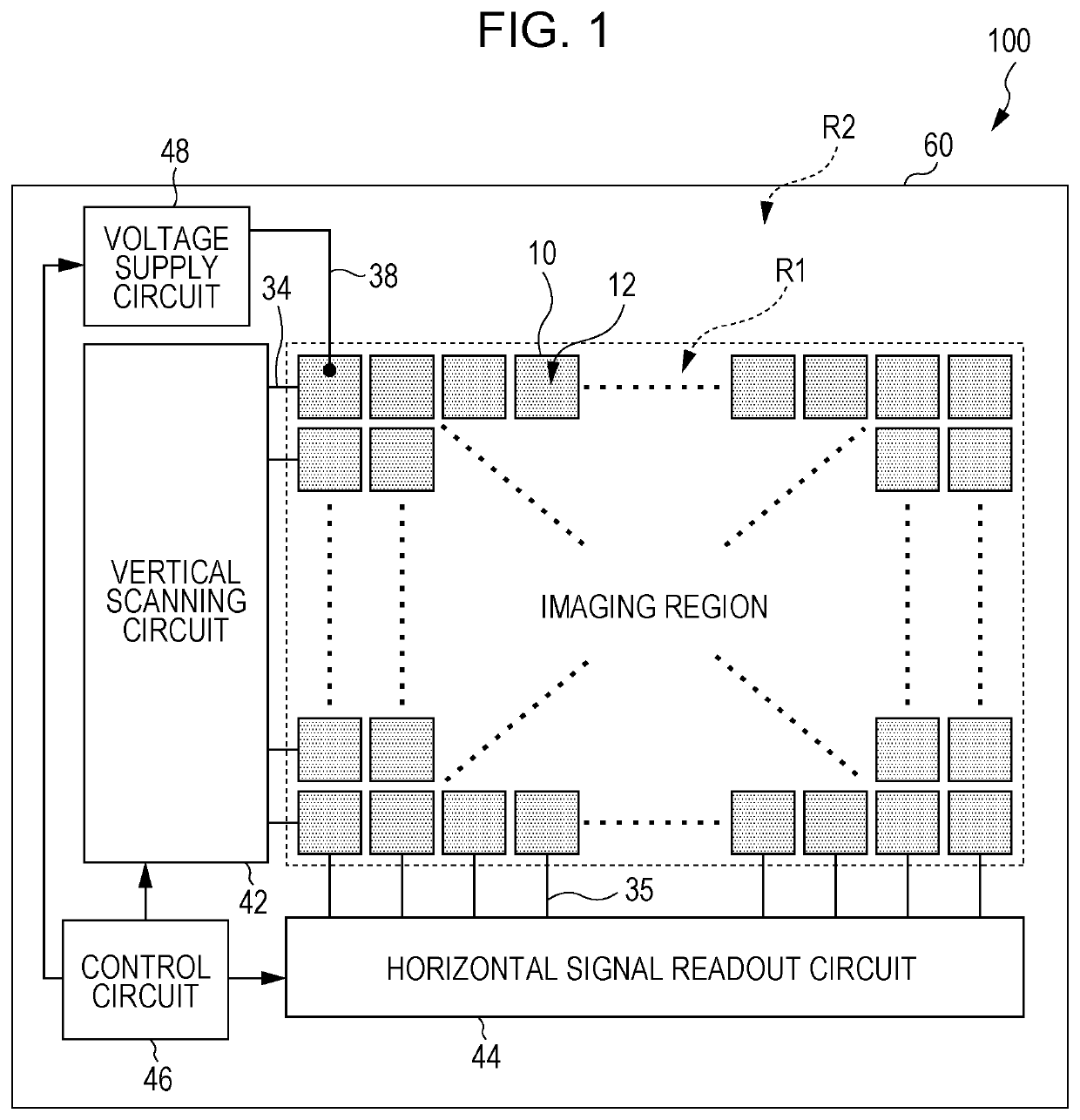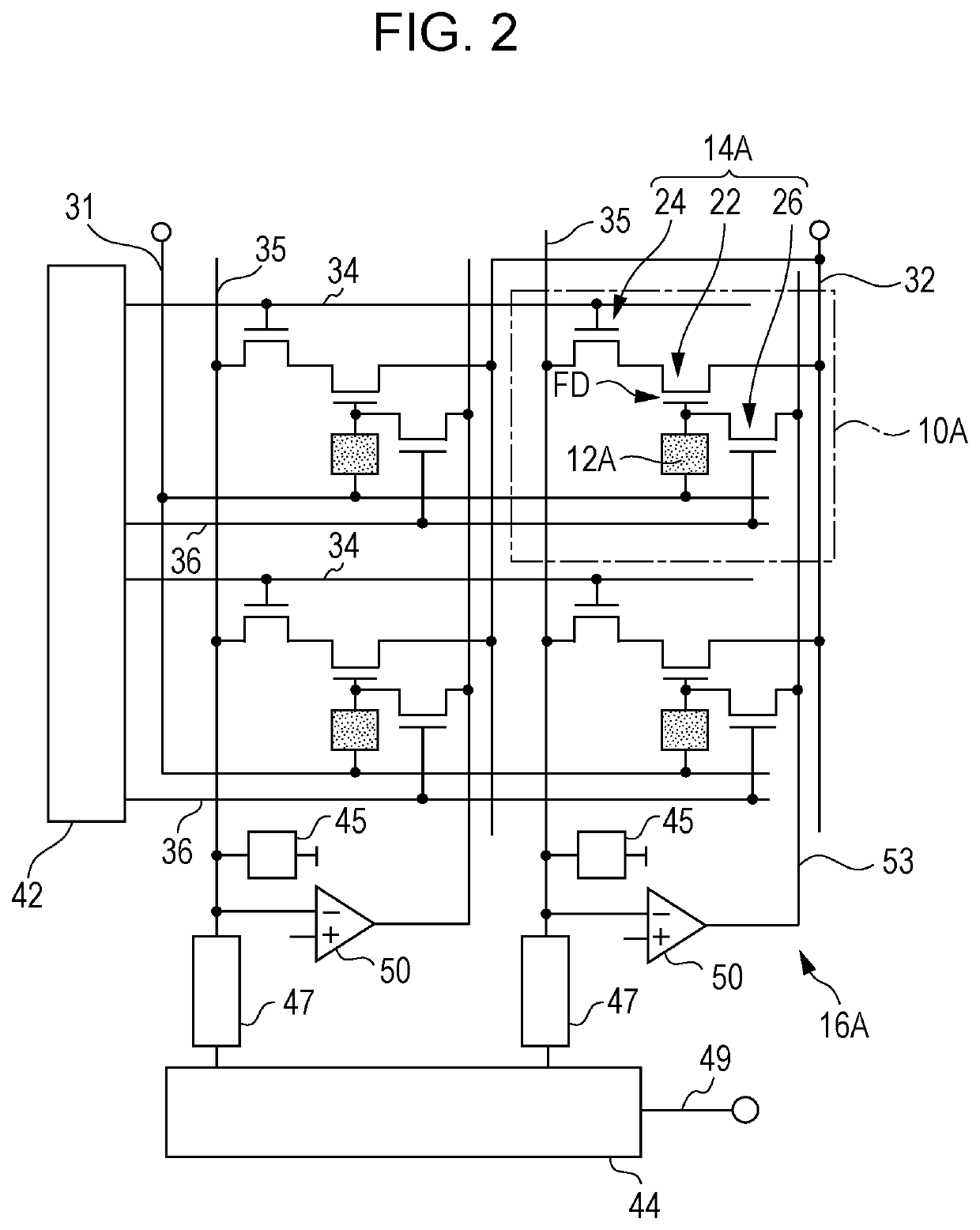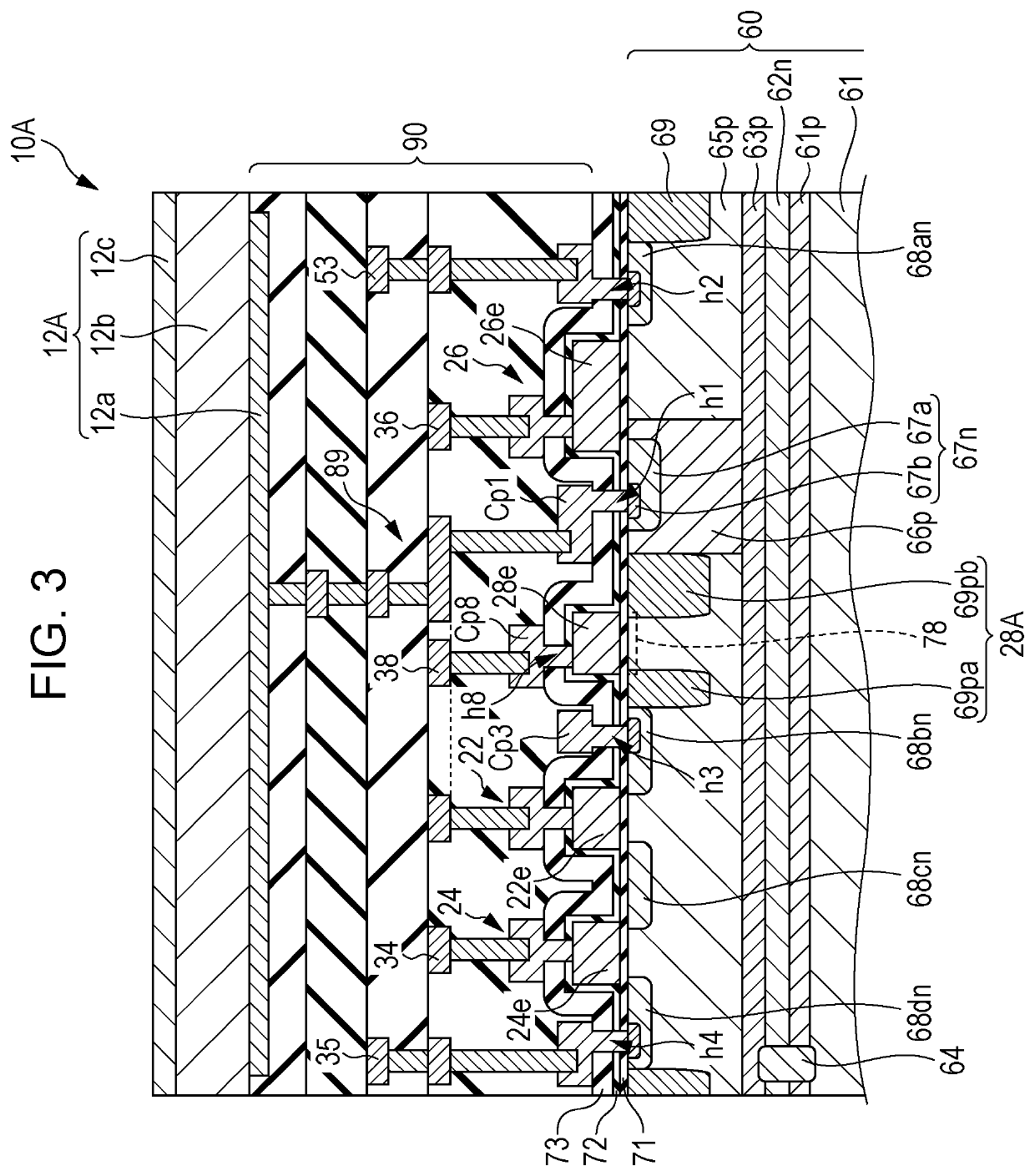Imaging device
a technology of a device and an image, which is applied in the direction of radio frequency controlled devices, transistors, television systems, etc., can solve problems such as and achieve the effect of deterioration of obtained images caused by nois
- Summary
- Abstract
- Description
- Claims
- Application Information
AI Technical Summary
Benefits of technology
Problems solved by technology
Method used
Image
Examples
first embodiment
[0156]FIG. 1 illustrates an exemplary configuration of an imaging device according to a first embodiment of the present disclosure. The imaging device 100 illustrated in FIG. 1 has multiple pixels 10 formed on a semiconductor substrate 60, and peripheral circuits.
[0157]The pixels 10 each include a photoelectric converter 12. The photoelectric converter 12 receives incident light, and generates positive and negative charges, typically a hole-electron pair. The photoelectric converter 12 may be a photoelectric conversion structure including a photoelectric conversion layer disposed above the semiconductor substrate 60, and may be a photodiode formed on the semiconductor substrate 60. Although the photoelectric converters 12 of the pixel 10 are illustrated in FIG. 1 spatially separated from each other, but this is only for convenience in describing, and the photoelectric converters 12 of the multiple pixels 10 may be continuously laid out on the semiconductor substrate 60 without spaci...
first modification
[0212]FIGS. 6 and 7 illustrate an imaging device according to a first modification of the first embodiment of the present disclosure. FIG. 6 illustrates an example of the layout of elements in a pixel 10B that the imaging device according to the first embodiment has, and FIG. 7 illustrates an exemplary circuit configuration of the pixel 10B illustrated in FIG. 6.
[0213]The pixel 10B illustrated in FIGS. 6 and 7 has a photodiode 12B as the photoelectric converter 12 instead of the photoelectric conversion structure 12A, as compared with the pixel 10A described with reference to FIGS. 2 through 4. In this example, the accumulation control line 31 illustrated in FIG. 2 is omitted. The point of one of the drain and source of the reset transistor 26 being connected to the charge accumulation node FD is the same as the configuration illustrated in FIG. 2. Note, however, that the power source wiring 32 is connected to the other of the drain and source of the reset transistor 26 here.
[0214]T...
second modification
[0217]FIG. 8 illustrates a second modification of the imaging device according to the first embodiment of the present disclosure. FIG. 8 illustrates an example of layout of elements in a pixel 10C that the imaging device according to the second modification has.
[0218]The primary point of difference between the pixel 10C illustrated in FIG. 8 and the pixel 10A illustrated in FIG. 4 is that the pixel 10C has the reset signal line 36 connected to the control electrode 28e instead of the voltage line 38. That is to say, in this example, the control electrode 28e is equipotential with the gate electrode 26e of the reset transistor 26.
[0219]In this example, the vertical scanning circuit 42 also has the functions of the above-described voltage supply circuit 48. Connecting the reset signal line 36 to the control electrode 28e enables the voltage line 38 and the voltage supply circuit 48 to be omitted, as exemplified in FIG. 8. Accordingly, effects of suppressing leak current can be obtaine...
PUM
| Property | Measurement | Unit |
|---|---|---|
| voltage | aaaaa | aaaaa |
| voltage VDD | aaaaa | aaaaa |
| voltage | aaaaa | aaaaa |
Abstract
Description
Claims
Application Information
 Login to View More
Login to View More - R&D
- Intellectual Property
- Life Sciences
- Materials
- Tech Scout
- Unparalleled Data Quality
- Higher Quality Content
- 60% Fewer Hallucinations
Browse by: Latest US Patents, China's latest patents, Technical Efficacy Thesaurus, Application Domain, Technology Topic, Popular Technical Reports.
© 2025 PatSnap. All rights reserved.Legal|Privacy policy|Modern Slavery Act Transparency Statement|Sitemap|About US| Contact US: help@patsnap.com



